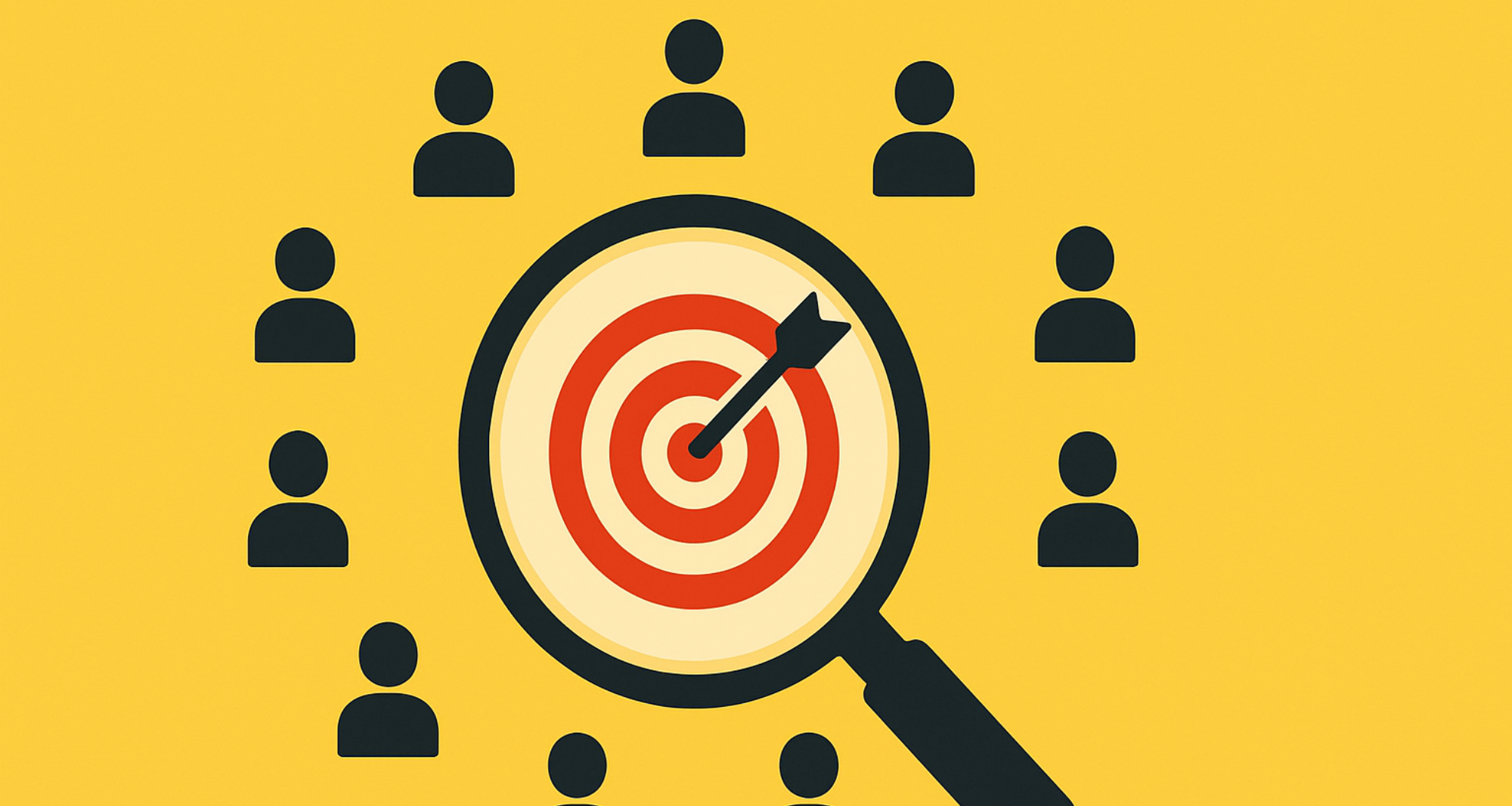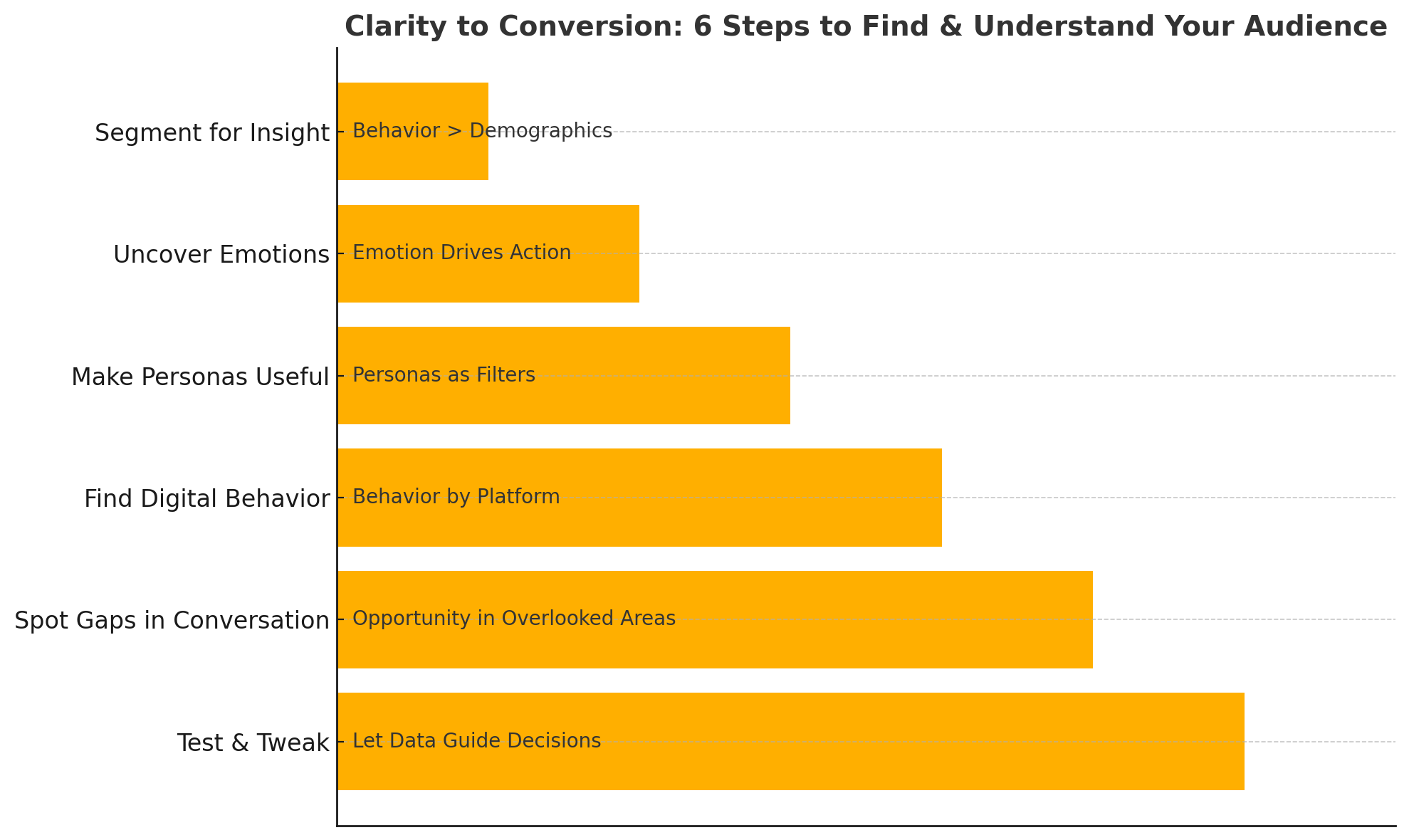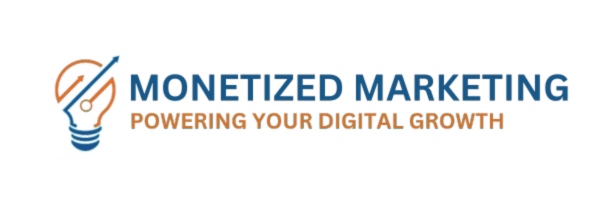
Some brands chase impressions. The smart ones chase alignment.
If your marketing efforts feel like they’re working harder than they should—with high traffic but low conversion rates, or engagement that doesn’t translate into real action—it’s likely not your offer that’s the problem. It’s your audience targeting.
Time and again, we see strong ideas underperform because they’re pitched to the wrong people. Even high-performing campaigns plateau when they aren’t aligned with the right buyer mindset.
Understanding how to find your target audience isn’t just foundational—it’s transformative. It affects every click, every conversion, every customer relationship.
Here’s what the numbers show:
42% of marketers are familiar with basic demographic data, including gender, location, and age. But fewer than half understand their audience’s interests, behaviors, or buying patterns. That’s a huge blind spot—and a massive opportunity.
To help you close that gap, we apply what we call the Clarity to Conversion Method. A six-step approach designed to help you identify your real audience, craft messaging that resonates, and create marketing that scales with purpose.
A Smarter Way to Find the Right People
Before launching another ad, building another funnel, or writing another headline, get clear on who it’s for. This method demonstrates how to identify individuals most likely to make a purchase, remain loyal, and become advocates.
Step 1: Segment for Insight, Not Just Organization
Most segmentation begins with checkboxes, such as age range, location, and job title. That’s a start—but not nearly enough.
Effective segmentation answers a different set of questions:
- What is prompting this person to seek a solution now?
- What risks are they trying to avoid?
- What outcomes are they prioritizing—speed, security, impact?
This is where your CRM and analytics become goldmines. Track behavior, not just identity. Group users by how they interact with your brand—time on site, content consumed, pages visited.
Real-world shift:
One SaaS company targeting “startup founders” saw flat conversions. Deeper data revealed that the most active buyers were operations managers at mid-sized firms—people focused on team efficiency, rather than founder flexibility. They adjusted their messaging, changed their platform focus, and reduced acquisition costs by over 25%.
Step 2: Uncover the Emotions Behind the Search
Pain points matter—but emotion drives decisions.
Too often, marketers stop at surface problems: “It’s too slow,” “It’s confusing,” “It costs too much.” Those are symptoms. The real leverage comes from understanding what’s underneath:
- Is the buyer concerned about falling behind their peers?
- Are they embarrassed by outdated tools or processes?
- Do they want to be seen as innovative, capable, or in control?
Zendesk reports that 68% of customers expect personalized experiences. You can’t create that without understanding emotional context. Personalization isn’t just about using first names in emails—it’s about understanding what matters to your audience and why.
How to uncover emotion:
- Interview recent buyers and ask, “What made this feel like the right time to act?”
- Analyze reviews and testimonials for emotionally charged words
- Use AI-based tools to pull patterns from survey responses or support chat logs
When you speak to the emotion behind the need, your message doesn’t just inform—it moves.
Step 3: Make Personas Useful Again
Let’s be honest—most personas collect dust.
They’re built once, named something like “Marketing Mary,” and used only in presentations. But when used properly, personas become decision filters: Would this email resonate with Jamie, our results-driven skeptic? Would this landing page answer Zoe’s quiet objections?
A useful persona includes:
- What the person is trying to achieve
- What they’re afraid of getting wrong
- How they describe their challenge
- Where they spend time online—and why
- What kind of messaging builds trust with them
Quick framework:
- Persona A: Time-poor, outcome-focused, loves clarity
- Persona B: Research-driven, values education and proof
- Persona C: Status-conscious, influenced by social signals
Update your personas quarterly. Let them evolve with market trends and actual buyer behavior. Share them across your team—not as theory, but as practical tools.
Step 4: How to Find Your Target Audience’s Digital Behavior
This is where research gets real.
Your audience doesn’t just “use Instagram” or “read email.” They behave differently depending on platform, content format, and mindset.
Ask yourself:
- Where do they go to learn before making a purchase?
- What content formats make them stop scrolling?
- Which voices and communities do they trust?
Tools to dig deeper:
- SparkToro: Discover the podcasts, YouTube channels, and influencers your audience follows
- Google Analytics: See what referral sources bring the most engaged users
- LinkedIn Ad Insights: Especially powerful for B2B buyer behavior
Tip: Don’t just look at where they are—look at how they act there. A buyer might follow industry influencers on Twitter for news but make real decisions after reading long-form blog content or case studies.
Step 5: Spot the Gaps in the Conversation
It’s tempting to treat competitor research as a source of inspiration for copy. But smart marketers look for what’s missing.
Here’s how to shift the approach:
- Browse top competitors’ landing pages, ads, and email flows
- Note the benefits they push repeatedly—and what they gloss over
- Look for underrepresented segments or overlooked objections
Framework to use:
- What beliefs are they reinforcing?
- What segments are they speaking to or leaving out?
- What themes are getting stale in your industry?
Example:
If every software brand focuses on “easy onboarding,” you could shift your message to highlight long-term support, advanced training, or the depth of features. That contrast can make your offer stand out without changing your product.
Step 6: Test, Tweak, and Let the Data Lead
The final (and often forgotten) step: validate everything.
Audience clarity is a process. It starts with assumptions, but ends with evidence.
Test messaging, offers, formats, and segments. Start small:
- Two versions of a headline: one emotional, one direct
- Ads segmented by persona: one for “quick wins,” one for “long-term ROI”
- Email flows tailored by lead source (organic vs. paid)
What to track:
- Conversion quality by audience segment
- Lead-to-close time
- Retention rate and customer LTV by source
Let the winners inform your next round. Let the misses refine your targeting.
This is how audience research becomes audience strategy.

From Clarity to Action
Knowing how to find your target audience doesn’t just help you build smarter campaigns. It unlocks everything that comes after—better creative, stronger offers, deeper loyalty.
You don’t need more content, more emails, or more ads. You need better alignment.
Ask yourself:
- Which buyers are the best fit—not just to buy, but to stay?
- What do they value that others don’t?
- Where are we showing up that no longer serves us?
When you speak to the right people, in the right places, with the right language, marketing stops feeling like a grind. And growth becomes intentional.
Summary:
Learning how to find your target audience is more than a tactical step—it’s a strategic shift that affects everything that comes next. When you know exactly who you’re speaking to, your messaging becomes sharper, your campaigns become more effective, and your results become easier to scale.
The Clarity to Conversion Method provides a practical and repeatable approach to aligning your marketing with the individuals most likely to convert, stay loyal, and grow with your brand.
If you’ve been guessing or going broad, now’s the time to get focused. Start with clarity—because that’s where real momentum begins.
Want to get inside your audience’s head?
Once you know who you’re speaking to, the next step is understanding why they buy. This is where AI becomes your new best friend. It can help you uncover behaviors, preferences, and emotional triggers that even your best data dashboard might miss.
